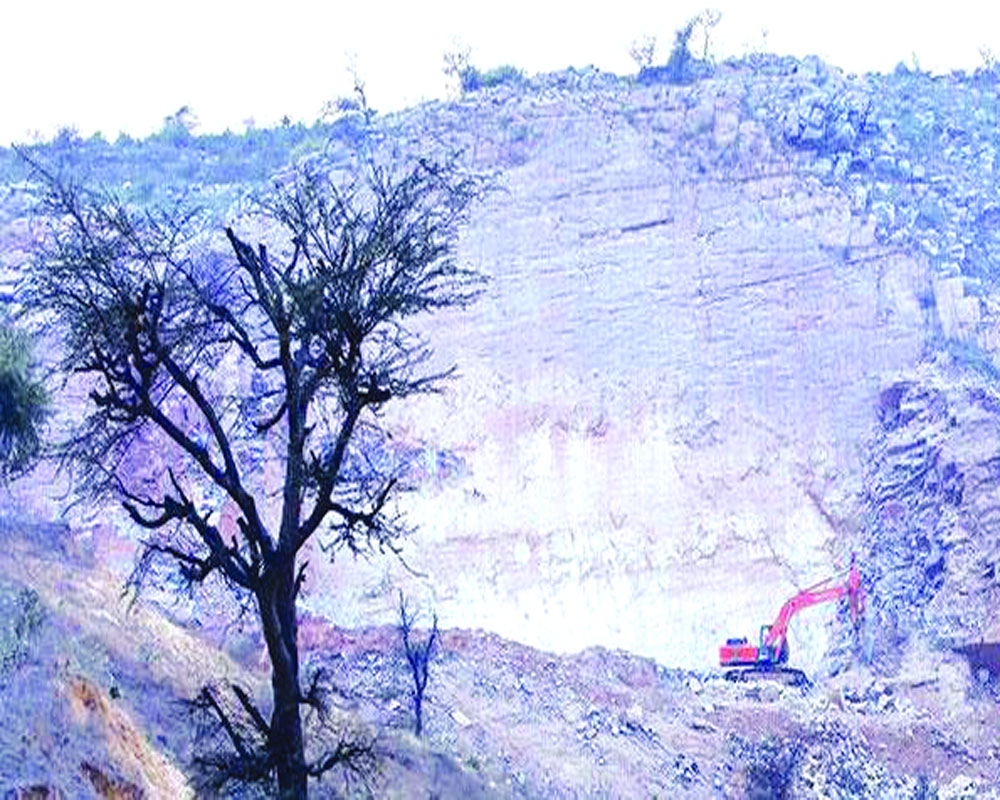It is baffling that the Aravallis, which were once a contiguous range, had to pay a heavy price due to human activities like mining. The range today has blunted, desertified and needs protection. The judiciary must intervene
The might of the mountain ranges is almost mythical. These natural formations have not only shaped history and topography but have also played a pivotal role in conserving the ecology. These once formidable ranges — be it the Western Ghats along the south-western coast of India or the Aravallis in the North — have existed unchallenged throughout the history of time. But the reign of supremacy for these colossal wonders seems to be waning thanks to deteriorating environmental and worsening climate conditions. The negative role played by mankind is unfortunately expediting the end of these marvels of nature.
The Aravalli mountain range is one of the oldest in the world. It extends across more than 693 kms from Gujarat to Delhi (through Rajasthan and Haryana). The Aravallis, with their vast landscape and biological diversity, have shaped India’s northern landscape in more ways than one.
They guide the monsoon clouds and act as a groundwater recharge zone. Thus, they are important for long-term ecological security of Indian cities. The Aravallis also help in preventing long-term desertification. They act as a barrier against the wind, carrying sand from the Thar Desert and prevent it from entering the Delhi-NCR region.
Greenery associated with this mountain range has been replaced with dry and dusty shrub-like environment. This is due to the mountain range being subjected to decades of abuse and threats from mining activities and large-scale real estate developments. The degradation of the Aravallis has led to a decline in wildlife habitat, thus adding to the animal-human conflict. The revival of the Aravallis has become almost an uphill task, thanks to the many problems associated with it and the continuous intervention of humans. The situation has been exacerbated due to a decline in rainfall in the past few decades, which has led to the depletion of the groundwater table.
As the Aravallis paid the price of being close to human habitations, human intervention sadly did not stop at deforestation of the mountains. The real estate lobby and the mining mafia started eyeing the geological wealth of the mountain ranges. Political protection and apathy of the authorities further compromised the already delicate condition of the range. And it’s not that only the terrain has been affected. People and communities, who were dependent on the Aravallis, are now faced with an uncertain future. Further, large-scale mining with dynamites blowing up huge tracts of granite rocks caused relentless vibrations and tremors that led to the permanent displacement of many bird species that were native to the area.
Prosperity of a region is directly proportionate to the concern and care shown by the local people towards their natural assets and resources. This is exactly the problem with conservation initiatives for the Aravallis as the people as also the officials have not realised the potential of natural marvel that they have at their disposal. They could only decipher the economic value of the range. As a result, this amazing creation of nature with all its unique flora and fauna was taken for granted and exploitation started to finish off large stretches.
To make matters worse, the Haryana Government recently passed an amendment in the Punjab Land and Preservation Act, a law that was drafted by the British in 1900. With a change in the law, it is now being feared that large areas of the Aravalli forest area, that were earlier protected, will now face the risk of being used for development purposes. But the Haryana Government defended the Act by stating that even though the protection of forests was its priority, the present scenario also required changes to be done, especially at a time when the State has to progress ahead.
This is shocking as the authorities admit that the State’s progress must happen at the cost of ecology and the environment.
There is no way to undo the damage done to the Aravalli range. Humans have exacted a terrible price from nature. The sad thing is that all of this is happening under the supervision of State authorities. Mining mafia trucks ply day-in and day-out, carrying loads of stone extracted from the quarries deep within the Aravallis.
In the midst of these dreary and grim conditions, all hope is not lost. The judiciary of India is playing a vanguard role by taking up critical issues pertaining to the well-being of the country and environment is certainly one of them. The National Green Tribunal (NGT) has intervened many times to ensure that the environment is safe. In matters pertaining to the Aravallis, too, the judiciary must intervene. This alone can stop the otherwise certain doom and death for the much-fabled Aravalli ranges.
(The writer is an environmental journalist)


























